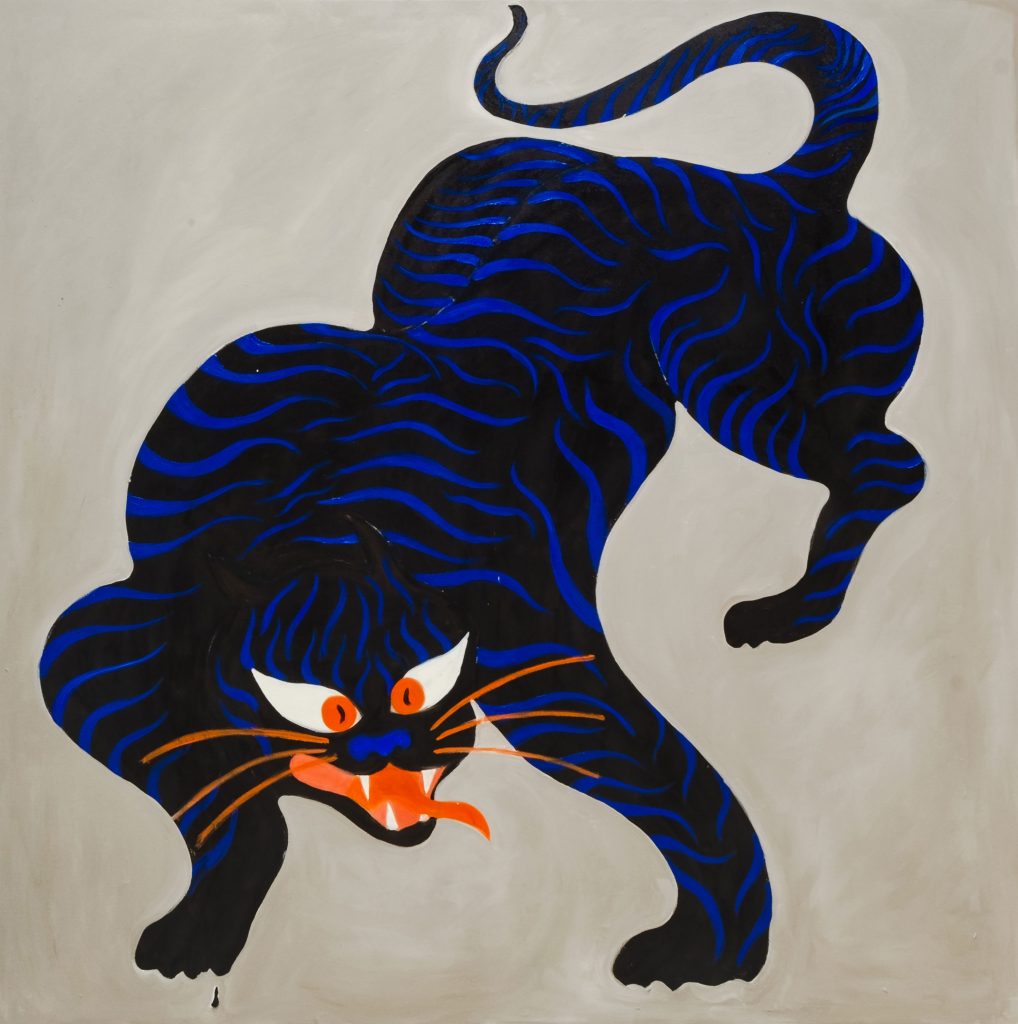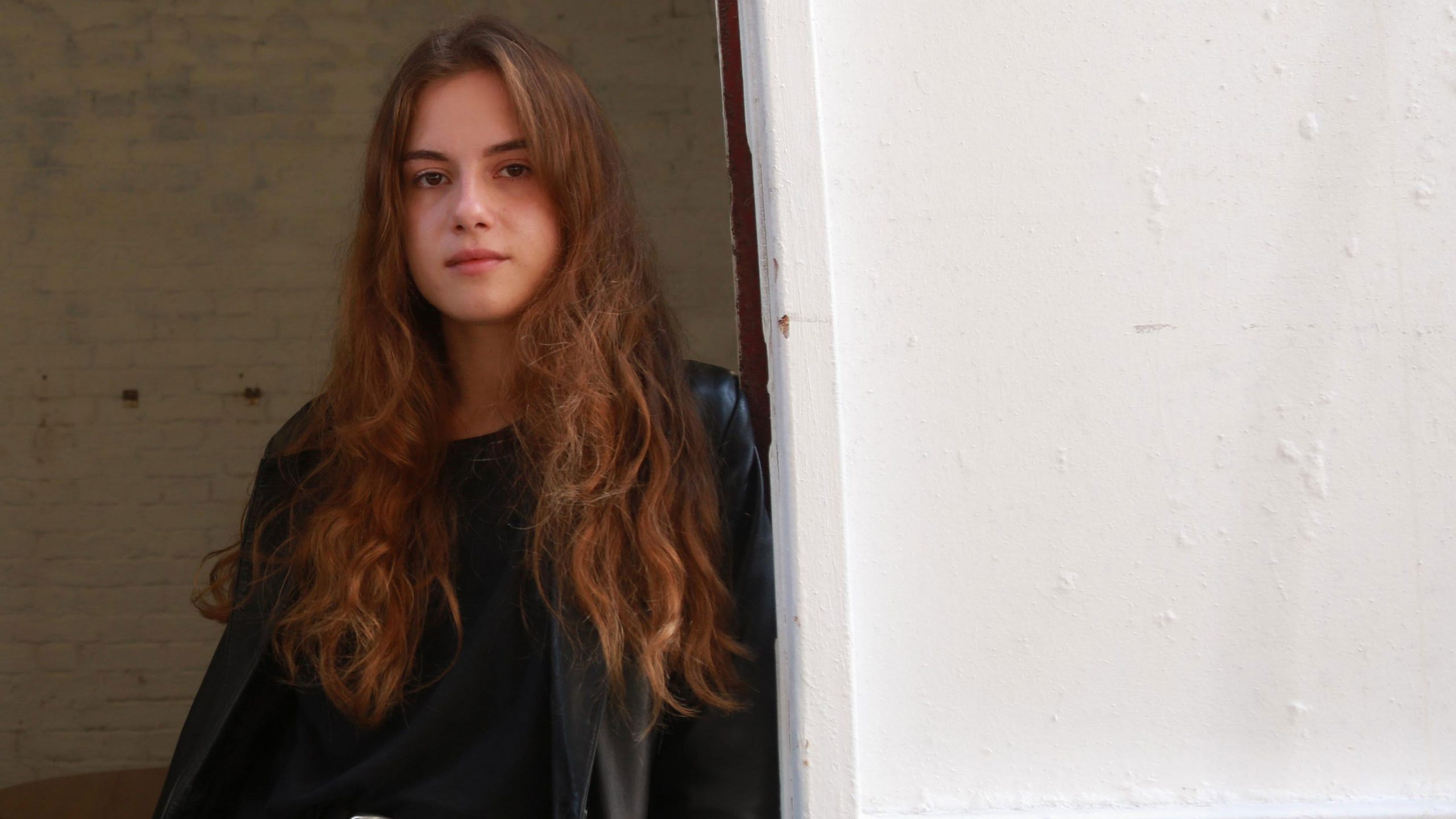(Image by Aria Shahrokhshahi, courtesy of Guts Gallery)
As a ‘working-class, queer Northerner’, one young woman felt she didn’t have a place in the art world. Now one of the world’s youngest gallery owners, she reveals what it takes to get the art industry to change.
When Ellie Pennick was forced to pull out of her place at the prestigious Royal College of Art in London, she did what many wouldn’t dare to do.
Pennick’s financial background meant she was unable to pay the eye-watering costs of a traditional arts education. But as she began to look around her, she saw that many other talented creatives were being barred out too.
The art world was guilty of “gatekeeping and not handing over the keys to those who deserve the pace in the art world,” she said. It wasn’t only those from lower-socio economic backgrounds who were being pushed away, it was LGBT+, BAME, women and disabled artists also.
The now 25-year-old became increasingly frustrated by a lack of people speaking out and art institutions’ refusal to change. “If they call anything out, their jobs can be in jeopardy,” she said. “The art world is cutthroat.”
Deciding enough was enough, Pennick launched ‘Guts Gallery’, becoming one of the world’s youngest art gallery owners. Almost immediately, she began to tear up the rule book, putting undercelebrated artists at the forefront and tackling inequality head-on. Despite being in its early stages when the coronavirus pandemic hit, this didn’t stop Guts Gallery from making its mark. Pennick saw this as the perfect moment to flip the traditional gallery system on its head.
This began with challenging the industry narrative around LGBTQ+, BAME, women and disabled artists, as well as creatives young and old. Instead of ‘representing’ artists, Guts Gallery calls for galleries to ‘champion’ them.

Image by Bardha Krasniqi, courtesy of Guts Gallery 
‘Pressure’s Rising I’ (2021) by Sophie Vallance, courtesy of Guts Gallery
This small change is intended to transform the power dynamic between artists and the gallery, which traditionally see galleries taking ownership of how an artist is exhibited and portrayed. By giving artists independence and power, Guts Gallery allows artists to express their own experiences in their own terms.
“All I want to do is set a standard that all galleries should and can uphold. The art gallery model is outdated,” said Pennick. “A lot of galleries played off the fact they and ‘their’ artists were slightly unattainable. But that haze is clearing, meaning the artist has more control which is so important. The power should always lie with the artist, not the gallery.”
Issues around ‘representation’ have long been present in the art world. Arts bodies such as Arts Council England have attempted to increase diversity within the sector with funding initiatives and by enforcing diversity targets. However, in 2020, this funding was threatened to be cut, after little progress had been made. Major cuts to the arts are only making the situation worse, as art institutions use funds to merely stay alive.
As Guts Gallery was founded with the main objective to support artist diversity, Pennick doesn’t aim to fill any kind of regimented quota, and artists she collaborates with agree.
“She doesn’t just go for you if you’re a woman or you’re black, or you’re gay, or any of that kind of stuff,” said artist Kemi Onabule. “It’s a connection, rather than a quota.”

The gallery’s unusual ‘nomadic’ approach points to fairer and cheaper way for art galleries to operate too. Without a permanent location, the gallery puts on a variety of pop-up exhibitions across London allowing a wider range of audiences to come and see artists’ work. Not having to pay the expensive overhead for a fixed gallery location allows the gallery to better support artists and pay them a higher percentage, Pennick says.
This experimental way of working came as a huge advantage during the UK’s recent lockdowns. “The emerging art world has taken a massive hit, especially for grassroots and mid-size galleries that run permanent spaces and deal at the ‘lower end’ of the market,” said Pennick. “Artists lost a lot of income, and you could feel the panic. Fortunately, as we are nomadic, we didn’t take the hit.”
Statistics from the Art Council show that this ‘hit’ has served as an unexpected reality check to many galleries. It found that 56% of gallery directors were concerned about the ‘viability’ of their organisations, and that their art collections were potentially at risk.
While other galleries scrambled for funding to keep a roof over their heads and keep their collections safe, Pennick was able to make a smooth transition to the world of online exhibitions. These included pandemic-inspired shows such as ‘When Shit Hits The Fan’, as well as using the social media platform Instagram to showcase artists and launch ‘private views’ online. In an effort to support early-career artists, the gallery made the decision to distribute 50% of the sales of works generated by established artists to emerging creatives in the show.
“Our digital exhibitions through the pandemic showed that a traditional gallery model isn’t the only way to support artists; it can be simple and accessible, you just have to think outside the box and run with it,” she said.
“As we all found out from this year, you never know what will hit us next. We want to be prepared, ahead of the game and set a standard.”
While it remains to be seen how many of the UK’s galleries will survive and the impact of Covid-19 on the industry’s creative diversity, Pennick is certain fundamental change could be on the horizon.
“If society changes, the art world will. If the next generation of artists, galleries and collectors refuse to be silent, there will be a shift,” she said.

